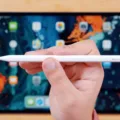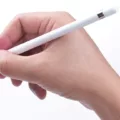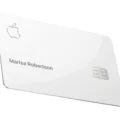Do you want to use handwriting on a Mac? Unfortunately, Macs don’t have a built-in handwriting feature – for English, at least. However, if you are writing in Chinese or Cantonese, you can convert handwriting to text with the trackpad handwriting feature.
In this article, I will discuss your options for writing in applications with handwriting. Then, I will discuss using the trackpad handwriting feature for Chinese or Cantonese. Feel free to skip to that part of the article if you are interested in learning more.
Apple Pencil Compatibility and Alternatives

Apple Pencil is not supported on a Mac. In fact, Macs do not support handwriting at all. To handwrite on a Mac, you will need a third-party handwriting tablet or iPad that you can connect to your Mac.
Wacom is a good option, as it sells tablets that you can write on with the Wacom pen, using Wacom apps like Wacom Notes and Wacom Inkspace that allow you to write by hand with your pen. You can also easily connect your Wacom tablet to your Mac.
If you have an iPad that supports Sidecar and Apple Pencil, then this is fairly simple as well. Sidecar allows you to use your iPad as a second monitor for your Mac and display a window from your Mac on your iPad. You can then write on this window using your Apple Pencil. It’s fairly simple, really, and you won’t need a Wacom or any other third-party tablet.
Read more about Sidecar and how to use it here.
Annotating PDFs With Handwriting on Mac
Although Macs do not support handwriting on the screen directly, you can annotate a PDF on a Mac by using your handwriting in the Preview app. However, handwriting on PDFs is not very intuitive, because you can’t write using your hand or a pencil on the screen directly, which is a feature most people are looking for when they are looking for “handwriting on a Mac.”
Instead, you can use your touchpad to scribble and draw on a PDF. You might be able to get good at this and write words by hand very well, but most likely, you will find it pretty cumbersome. Also, it is only available on Macs with a Touch Force trackpad.
Here’s how to do it. Go to the Preview app, open a PDF, and click on the Markup icon (which looks like an upwards-facing marker). The markup tool you will be looking for is Draw. You can press your finger on the trackpad and draw on the trackpad to create a scribble.
Other tools that are available (even on Macs without a Touch Force trackpad) are:
- Sketch: Allows you to sketch a shape
- Text: Type text with your keyboard
- Sign: Sign the document using your trackpad (or other methods)
As you can see, there aren’t many good ways to actually write by hand on a PDF. However, you can do a few short scribbles with the Draw tool and add a handwritten signature with the Sign tool, both using your trackpad.
Using Handwriting in Mac Applications
Other Mac applications do not support handwriting. However, you can use an iPad to handwrite in certain apps.
For example, you can use an Apple Pencil with Scribble on Apple Pages to convert handwriting into text. If you pair an Apple Pencil with an iPad that has iPadOS 14 or later, Scribble will be on by default.
You can also open a document in Pages, tap your Apple Pencil to your screen, and tap on Scribble on the bottom to turn it on if it is not already on. You can then start writing, and the iPad will convert your writing to text. You can then save the document or copy and paste the text into the Mac window that is open on your iPad via Sidecar.
To learn more about using handwriting with Pages, click here.
The Notes app on an iPad also supports hand drawings and scribbles with an Apple Pencil or your finger. Learn more here.
Handwriting in Chinese or Cantonese: Setting Up a Handwriting Input Source on Mac
Now, let’s move on to handwriting in Chinese or Cantonese. Apple supports adding a handwriting input on Mac for Chinese or Cantonese. You can set up a language input for Chinese or Cantonese and then use your Trackpad to draw Chinese or Cantonese characters. This is useful when you have a Latin keyboard but want to write in Chinese or Cantonese.
First, though, you will need to go to your Mac’s input settings and add Chinese or Cantonese as an option. Go to Apple menu > System Settings/Preferences > Keyboard and then click on Text Input or Input Sources.
Click on Edit and then on + (on some versions of macOS, click on + directly) and search for Cantonese or Chinese (available in different dialects). Select it and click on Add.
Opening the Trackpad Handwriting Window
Once you’ve added Chinese or Cantonese as an input option, you can open the trackpad handwriting window by switching from the US input to the Chinese or Cantonese input. Look for an icon at the top of the screen that says US (if you normally type in American English). See an example in the following screenshot:
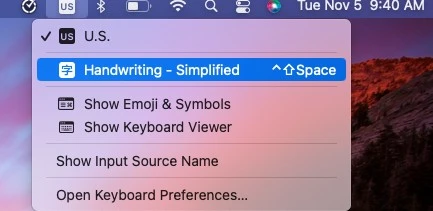
Choose the Handwriting option, and a handwriting box will appear. You should already be in Google Docs, Microsoft Word, or any other document or note writing application so you can start writing immediately.
Converting Handwritten Notes to Text
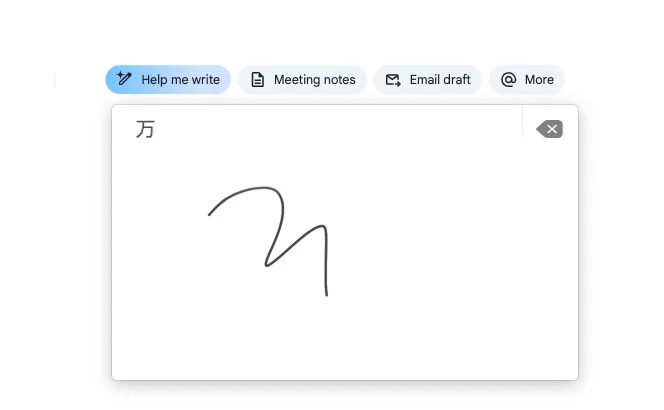
You can draw a Chinese or Cantonese letter with your trackpad, and the trackpad window will provide several suggestions. It will continually improve based on your personal handwriting style, so the suggestions will get better over time.
To select a suggestion, tap the appropriate place on the trackpad. For example, if you want to select the suggestion shown in the top-left corner, tap the top-left corner of your trackpad. It’s that simple! Your Mac will automatically convert your chosen option to text, and it will appear as text in the document. Converting trackpad handwriting to text is fairly straightforward for Chinese and Cantonese.
Conclusion
Let’s summarize. In short, a Mac doesn’t support handwriting by default. However, you can use a Wacom tablet or an iPad with an Apple Pencil and Sidecar. A Mac only offers limited handwriting applications via its trackpad, including for signing documents and for drawing Chinese and Cantonese characters.






